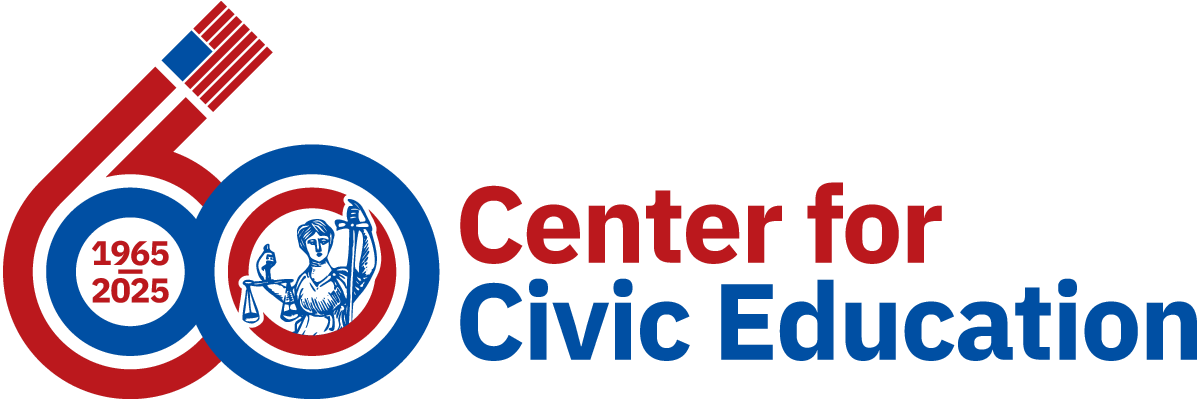
Women’s Rights
Session Plan
- Begin by asking participants to brainstorm a list of rights women did not have at the time of the Seneca Falls Convention.
- After five minutes, project or distribute this list of rights denied to women to students to review.
- As a whole group, ask students to react to the list.
- What did you find surprising about this list?
- Which rights on this list are similar to those you listed?
- Briefly describe for students the context surrounding the Seneca Falls Convention.
- The Seneca Falls Convention was held in 1848 in Seneca Falls, New York, and was the first women's rights convention in the United States.
- It was organized primarily by activists Elizabeth Cady Stanton and Lucretia Mott to address women's social, political, and economic inequalities.
- Introduce The Declaration of Sentiments to address the issue of gender inequality in the 19th century United States.
- Chart Paper (1 sheet/group)
- Markers
- Sticky Notes
- List of rights denied women from "Living the Legacy: The Women’s Rights Movement (1848-1998)"
Tell participants: Today, we will be focusing on some of the big issues and ideas concerning women’s rights being grappled with during the 19th century in the United States of America.
Option 1: Whole Class Exploration
- Share the first podcast, The Seneca Falls Convention, with your students.
- While they view/listen to the recording, ask students to pay attention to references being made to some of the conceptual ideas that contributed to the organization and aims of the convention.
- After watching/listening to the podcast, ask one student to share a brief summary of the ideas and topics discussed. Prompt up to two additional students to correct or expand upon the shared summary.
- Repeat this process for the remaining four podcasts adding questions and wonderings to fuel reflection and inquiry, based on each of the 60-second podcasts.
Option 2: Small Group Activity
- Divide the class into small groups (4-5 students each). Before the activity, set up stations, with each station showing one of the four remaining podcasts. Assign each group to a specific station.
- Podcast episodes can be cued up with a link or QR code on the paper. Students can use phones or devices, or tablets can be set at each station.
- Tell each group that they will have five minutes at each station until they are prompted to rotate.
- When they arrive, they will have one minute to actively listen to the podcast (taking notes on key points, interesting facts, or any thoughts that arise). At the end of the podcast, students will have four minutes to write down their reaction questions and thoughts on that station’s chart paper.
- After 5 minutes, students will be prompted to rotate counterclockwise to the next station.
- Repeat steps 3 and 4 until each of the stations has been visited by each of the groups.
- Each group will have five minutes to review the reflection notes found on the chart paper at their final station.
- Prompt groups to identify any trends or common reactions on their chart paper.
- Ask each group to share their findings at the end of the five minutes.
Extension Opportunity: Equal Rights Amendment
- Provide participants with the text of the Equal Rights Amendment referenced in the fifth podcast. Explore more the impact of this proposed legislation.
- Compare and contrast the ERA to the Declaration of Sentiments
- What might we learn from the ERA and Declaration of Sentiments about the landscape of equal rights for women?
Extension Opportunity: Beyond the Legacy Video Guide
- After discussion of the 60-second podcasts, share the Beyond the Legacy Video: Women’s Rights in America. Use any or all of the questions noted below and additional questions in the resource Beyond the Legacy Video Guide: Women’s Rights.
- What is the relationship between the Seneca Falls Convention and voting rights?
- What was unique about this convention?
- What are some of the rights listed that have yet to be realized today?
- What role did Frederick Douglass play in the fight for women’s rights? Explain the connection between abolition and women’s suffrage.
- What was controversial about the 9th resolution in the Declaration of Sentiments?
- What is still problematic about the 13th Amendment?
- How did the 14th Amendment affect women’s rights in particular?
- What impact did the 15th Amendment have on politics?
- How did women react to their lack of franchise in the 1870s? How were their actions strategic?
- What are the implications of the Minor v. Happersett decision? How does the decision affect the interpretation of the 15th Amendment?
- Does the Constitution give the right to vote?
- What role does the ERA play in women’s rights?
- Equal Rights Amendment
- The Declaration of Sentiments
- Women’s Rights in America 60-Second Civics Podcast
- Beyond the Legacy Video: Women’s Rights
- Beyond the Legacy Video Guide: Women’s Rights
- Chart Paper
- Markers
- Sticky Notes
- Interactive Whiteboard
- Digital Collaboration Space
Discourse Launch Activity
Note: The following steps are the beginning of the Paideia seminar process, which entails taking a deep dive into the text. Whether doing the Paideia or the Structured Academic Controversy (SAC) as the discourse model (or both), these steps provide the opportunity to access the text for use in either discourse activity.
- Begin by asking participants if they are familiar with the modern context of gender inequality in the United States.
- Have a brief class discussion to explore their understanding and examples of gender inequality in contemporary society. Discuss examples found in social, governmental, and/or economic structures.
- Introduce The Declaration of Sentiments to address the issue of gender inequity in the early United States.
- Text Support Option: Teachers can use the Close Reading Template to add the text, providing a strong framework for analyzing and understanding complex text. In using this template, teachers will need to develop text-dependent questions to support students’ comprehension. This is a powerful tool to support literacy in all learners in addition to scaffolding in preparation for the civil discourse.
Primary Text Inspectional Read
- Distribute the text, The Declaration of Sentiments. Discuss with participants what they anticipate the text is about.
- Have them number the paragraphs in the text. Then ask participants to read the text while highlighting unfamiliar words and phrases.
Vocabulary
- Have participants share the words and phrases they found unfamiliar while a volunteer lists them on the (interactive) whiteboard. Be sure to include:
- "born equal"
- "equal station"
- "great precept of nature"
- human rights
- "inalienable rights"
- laws of nature
- "sacred right"
- Use your preferred practices for front-loading vocabulary comprehension in a complex text.
- Alternatively, assign the words and phrases to groups of participants to research and define.
- Have the groups share with the entire class and discuss until all participants are comfortable with the surface meaning of the text.
Analytical Read
- Have participants read through the text selection again, slowly highlighting the three most impactful lines or sentences.
- Then, in the selections' margins, ask students to write notes on what makes those lines or sentences so compelling.
- Chart Paper (1 sheet/group)
- Timer (optional)
- Sticky Notes
- Markers
- The Declaration of Sentiments
- Highlighters
Note: Choose one or both of the discourse models below.
Civil Discourse Model #1
- Paideia Seminar: A Paideia Seminar is a collaborative, thought-provoking dialogue about a text selection, facilitated with open-ended questions. The seminar's main purpose is to arrive at a fuller understanding of the textual ideas and values of ourselves and of each other. The discussion occurring over days 2-3 will be on the Seneca Falls Convention and the Declaration of Sentiments. Participants will make active connections between these ideas central to this convention and the impact those ideas have on our lives today.
Civil Discourse Model #2
- Structured Academic Controversy (SAC): In the structured academic controversy, participants are assigned a stance on a question and work to come to a consensus on a contentious issue. The strategy reinforces the idea that before people commit to a side, they should seek to understand the other side's argument. The goal of a SAC is not to win; rather, SACs should give participants adequate time to present content knowledge and diverse perspectives as well as time for clarification questions, small group discussion, large group discussion, and consensus building. The predetermined format allows for structure and support for multiple viewpoints to be heard, understood, and validated while informing everyone’s views on the question of whether the Seneca Falls Convention met its goals.
- Paideia Seminar Plan – The Declaration of Sentiments
- Option: Use the Paideia Plan template and engage with a different text, such as the Equal Rights Amendment or combine the use of two texts.
- Highlight some of the ideas discussed during the previous day’s discourse model(s). Be specific and explicitly connect comments and ideas to the participants who shared them.
- Return to the Inquiry question:
- Can civil discourse lead to the recognition of rights?
- As a pre-writing exercise, participants should be encouraged to revisit notes they captured on the margins of their text selection, personal recording space, etc., and during the Launch Activity to refresh their memories of earlier discussions on this topic.
- Select one or both activities below to assess and authentically engage participants as you conclude this discourse.
Writing Task
- Today, women have gained many rights that were once denied to them, but challenges to gender equality still exist. How do you see the legacy of the Seneca Falls Convention and the Declaration of Sentiments in ongoing efforts for gender equality and women's rights in the modern world?
Or
- The Women's Rights movement has been a long journey. Many trace its roots to the Seneca Falls Convention in 1848, but progress has been inconsistent and, at times, felt like it has moved backward. What should the future of the Women's Rights movement in America focus on? Write an argumentative essay (or other expressive work like a PowerPoint presentation or a Public Service Announcement video) that provides the key reasons why you believe your suggested next steps to advance women's rights would strengthen American democracy. Focus on the included texts and podcasts, issues raised in related readings and during the SAC, and your background knowledge on your stance.
Extension Task
- Reflecting on the historical context of the Seneca Falls Convention, what other social and political movements might have influenced the development of the women's rights movement, and how did women's rights activists collaborate with or diverge from other reform efforts?
Or
- Outline an advocacy campaign or legislative bill that you believe would be critical in supporting the future of the Women's Rights movement. Identify key stakeholders, respond to counterarguments, and highlight messaging reflecting what you hope to accomplish.






